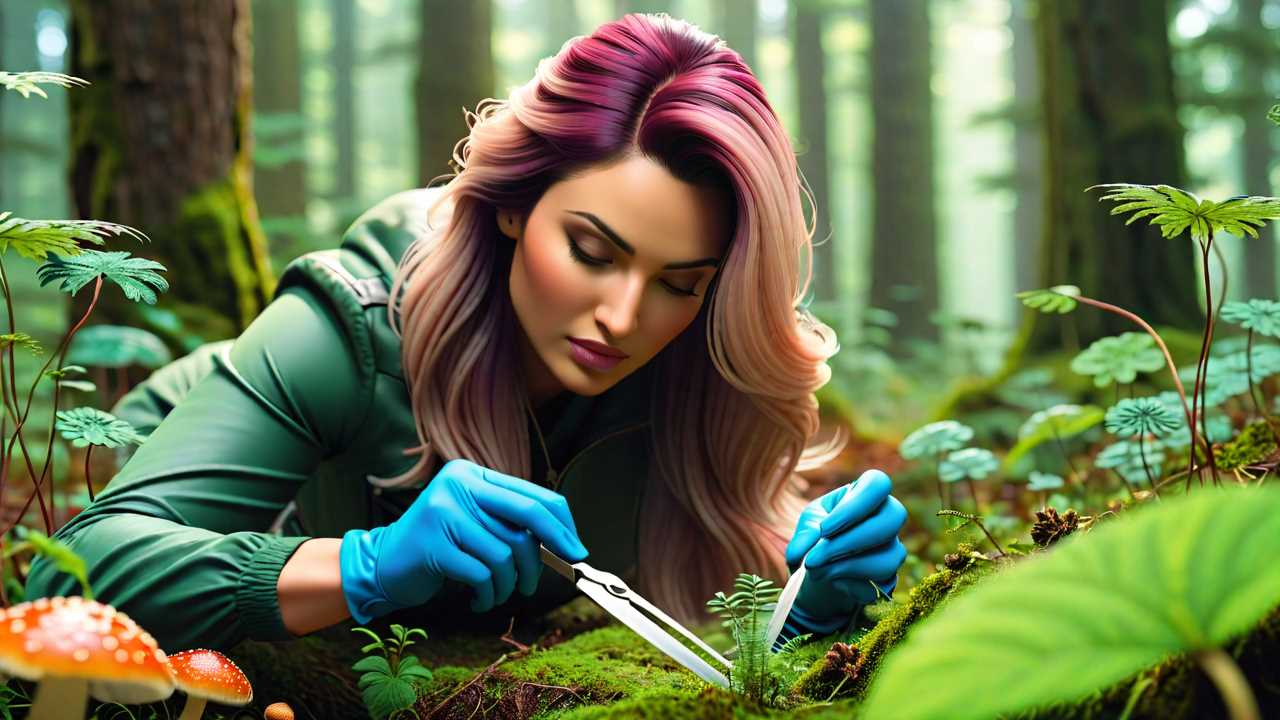
Imagine you stumble upon a patch of wild mushrooms during a hike. You feel excited about the possibility of adding them to your dinner, but are they safe to eat? Understanding the best practices for foraging wild edibles safely can mean the difference between a delightful meal and a dangerous mistake. So, how can you guarantee your foraging adventures are both enjoyable and risk-free?
Identifying Edible Plants
When identifying edible plants in the wild, paying close attention to key features such as leaf shape, color, and smell becomes crucial. Leaves can come in various shapes like ovate, lanceolate, or palmate, which can aid in distinguishing between different plant species. Colors can vary greatly, from vibrant green to reddish-brown, and can offer clues about the plant's identity. Some edible plants emit distinct smells, such as the aromatic scent of wild garlic or the citrusy fragrance of lemon balm.
Moreover, observing the plant's overall growth habit, the arrangement of leaves on the stem, and the presence of any flowers or fruits can further assist in identification. For example, plants like wild raspberries have thorny stems and produce clusters of small, red berries in the summer. Taking note of these characteristics can prevent the accidental consumption of toxic look-alike plants and enrich your foraging experience.
Safe Harvesting Techniques
Utilize proper techniques to guarantee the safe and effective harvesting of wild edibles in their natural habitat. When foraging for wild edibles, it's essential to make sure you aren't damaging the ecosystem or endangering yourself.
Here are some key guidelines to follow:
- Use sharp and clean tools: Have a sharp knife or scissors to cleanly cut the plants. Dull tools can cause unnecessary damage to the plant and increase the risk of accidents.
- Harvest ethically: Only take what you need and avoid over-harvesting. Leave some of the plant behind to allow for natural regeneration and to sustain the local wildlife.
- Identify the plant correctly: Be absolutely certain of the plant's identity before harvesting. Mistaking a toxic plant for an edible one can have severe consequences.
- Avoid contaminated areas: Stay clear of plants growing near roadsides, industrial sites, or areas sprayed with chemicals. These plants can be contaminated and pose health risks if consumed.
Avoiding Toxic Lookalikes
To forage wild edibles safely, you must carefully learn to differentiate between edible plants and their toxic lookalikes in the natural environment. Many edible plants have toxic counterparts that can lead to serious health issues if consumed.
One common example is the wild carrot and the highly toxic water hemlock. While wild carrots have feathery leaves and a characteristic carrot-like odor when crushed, water hemlock has smooth leaves and a musty smell.
Another dangerous pair is the edible blackberry and the poisonous nightshade. Blackberries have thorny canes and clusters of small, juicy, black berries, whereas nightshade berries grow in clusters and are small, shiny, and black.
Additionally, the edible hen-of-the-woods mushroom has a lookalike called the toxic jack-o'-lantern mushroom. The hen-of-the-woods mushroom has a distinct earthy smell, while the jack-o'-lantern mushroom emits a faint odor of bleach.
Responsible Foraging Practices
Practice responsible foraging by always obtaining permission from landowners before harvesting wild edibles in any natural area.
When foraging, remember these key practices:
- Stay on Designated Paths: Avoid trampling on delicate vegetation by sticking to established trails.
- Harvest Ethically: Only take what you need and never deplete an entire patch of wild edibles.
- Leave No Trace: Carry out all your trash and any litter you may find to help preserve the natural environment.
- Respect Wildlife: Be mindful of local fauna and their habitats; avoid disrupting or damaging their homes.
Frequently Asked Questions
How Can I Properly Clean and Store Foraged Wild Edibles?
When cleaning and storing foraged wild edibles, make sure you wash them thoroughly to remove dirt and contaminants. Use a mixture of water and vinegar for cleaning, then store in airtight containers in the refrigerator for freshness.
Are There Any Regulations or Permits Required for Foraging?
When foraging, always check local regulations and permits. Understand any restrictions or protected areas. Follow guidelines to guarantee sustainable harvesting. Stay informed to respect nature and prevent over-harvesting. Prioritize responsible foraging to conserve ecosystems.
Can Foraging Have a Negative Impact on the Environment?
Foraging can indeed have a negative impact on the environment if not done responsibly. Overharvesting can deplete plant populations, disrupt ecosystems, and harm wildlife. It's essential to follow sustainable practices to minimize these effects.
What Are Some Common Mistakes to Avoid While Foraging?
When foraging, avoid misidentifying plants, picking near polluted areas, trespassing, over-harvesting, and damaging habitats. Always carry a field guide, practice Leave No Trace principles, seek permission when needed, and prioritize safety by wearing appropriate gear.
How Can I Incorporate Wild Edibles Into My Cooking?
Want to boost your cooking? By incorporating wild edibles, you can enrich flavors and add a unique touch to your dishes. Start by researching safe and delicious options, then experiment with different recipes!
 SportsHollywoodLifestyleFashionHome & GardenTrendsPrivacy PolicyTerms And Conditions
SportsHollywoodLifestyleFashionHome & GardenTrendsPrivacy PolicyTerms And Conditions
